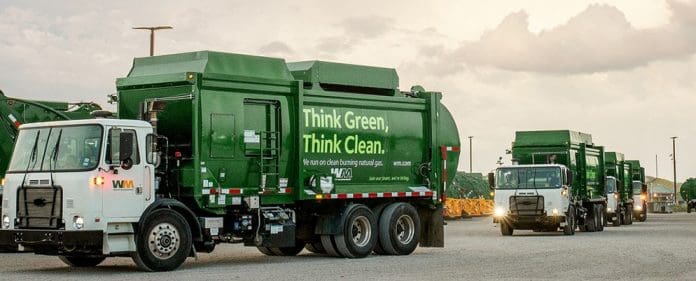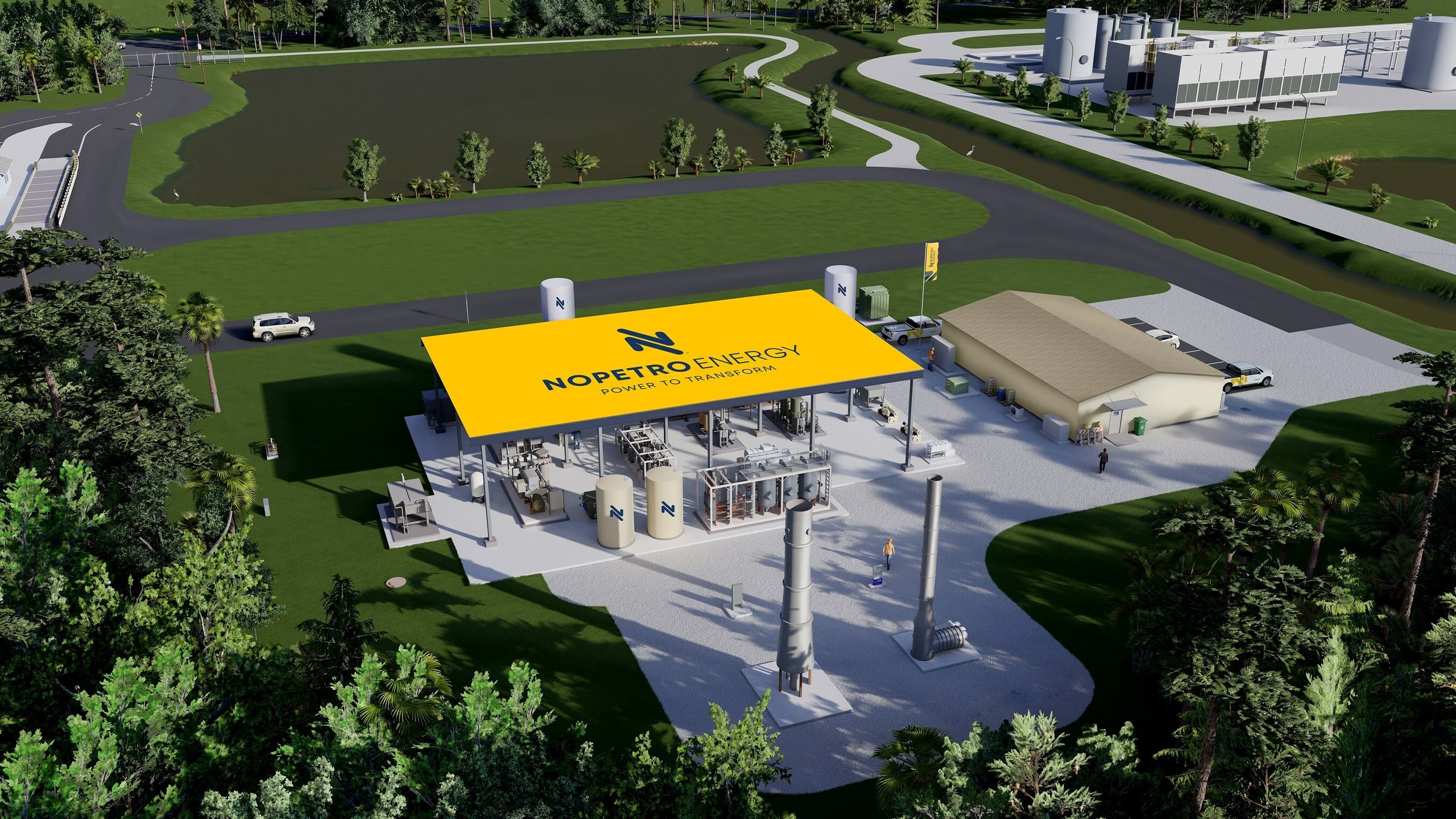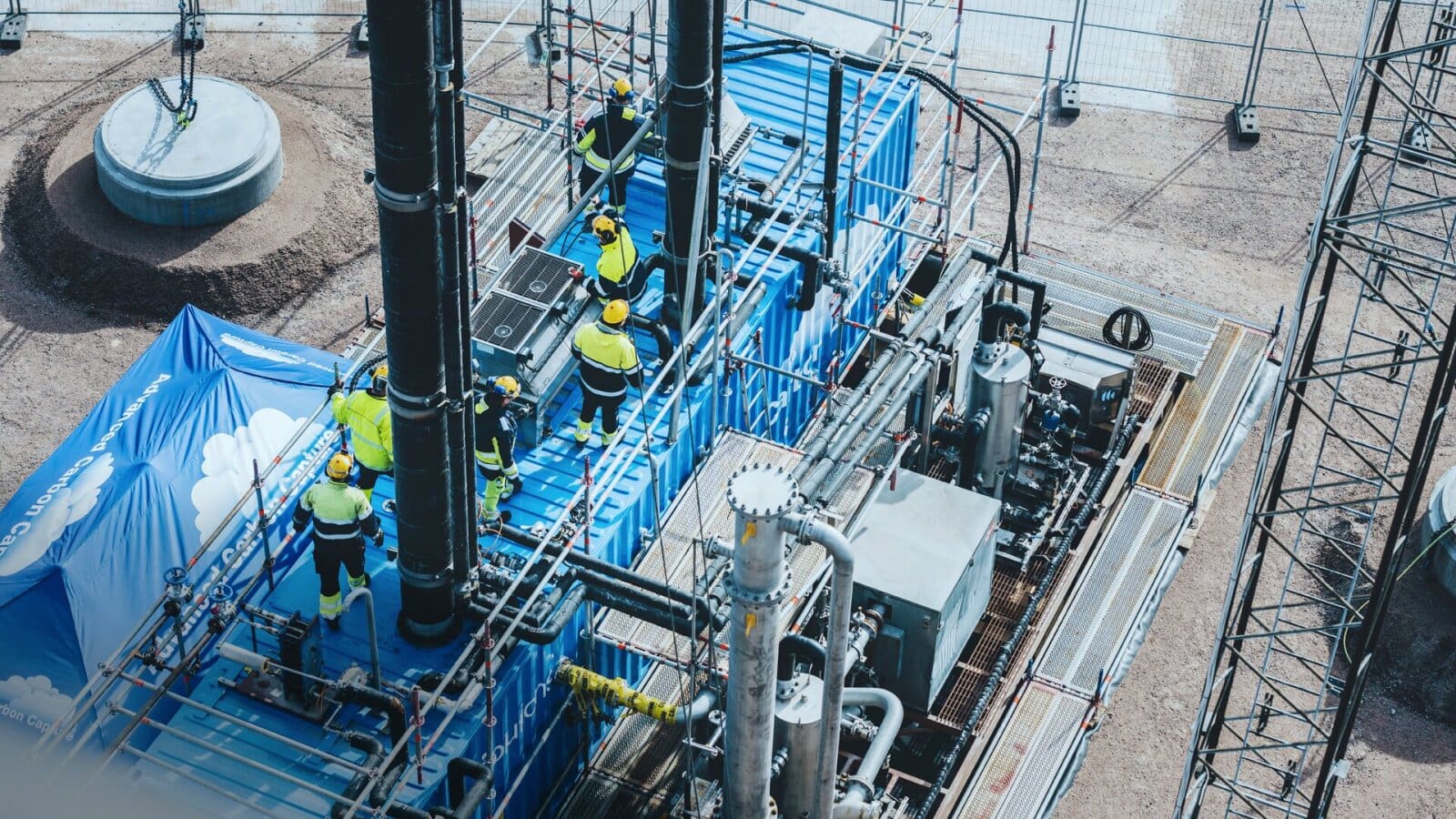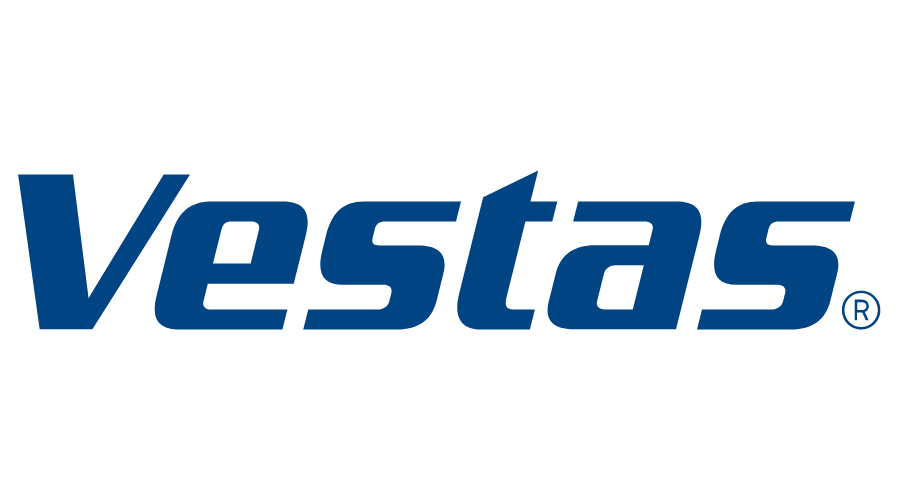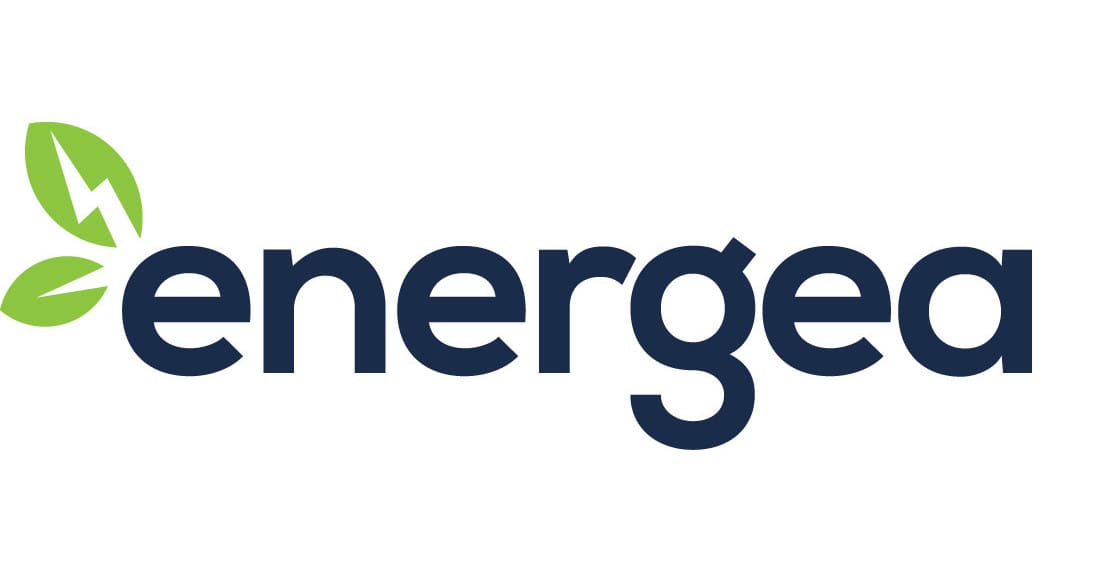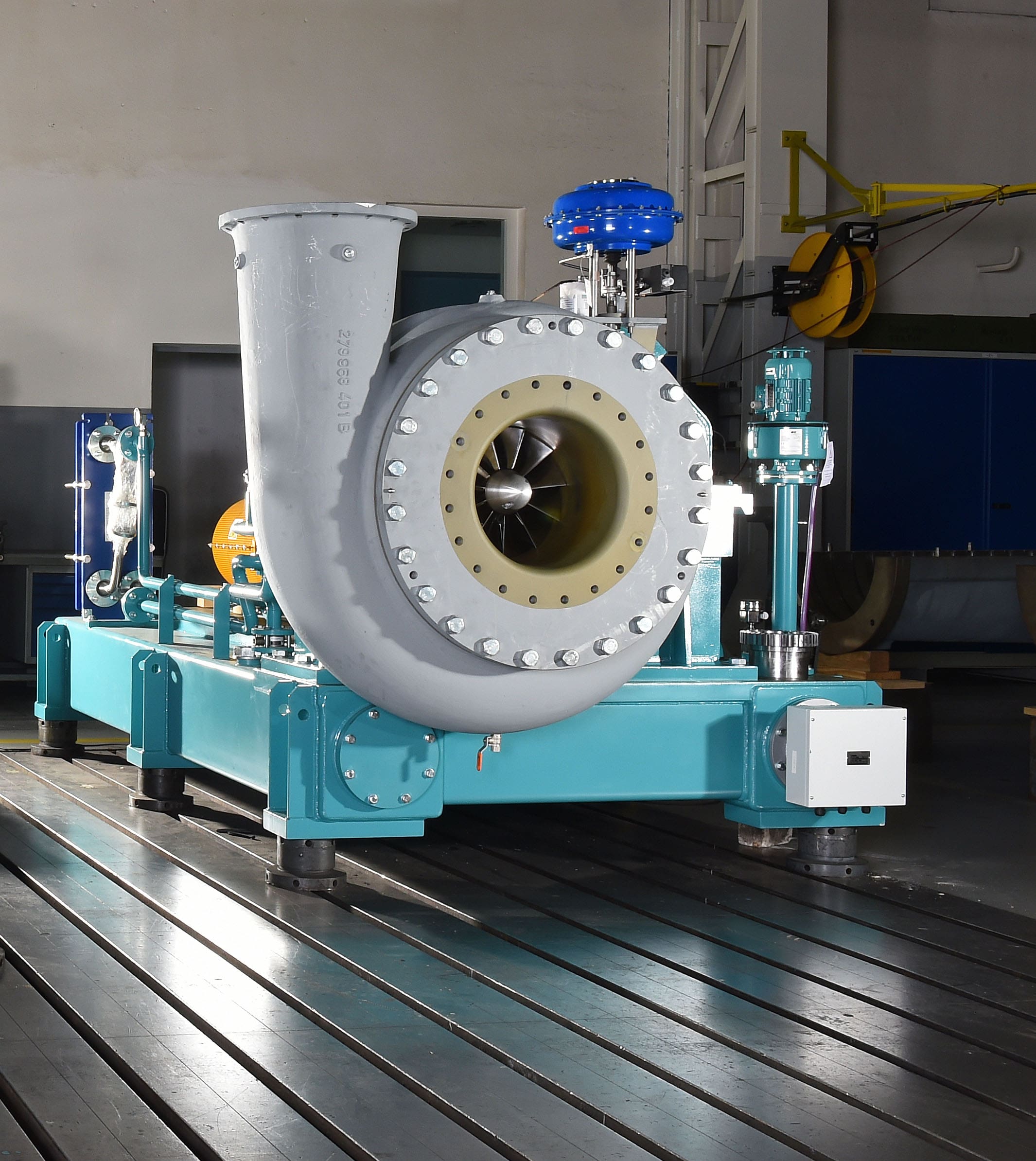WM, formerly known as Waste Management, made the long-anticipated announcement that the renewable natural gas (RNG) industry has been waiting for. WM is investing US$825 million between 2022 and 2025 to expand its RNG infrastructure with the goal of outfitting its entire natural gas fleet with RNG by 2026. Investments include RNG production plants, landfill gas-to-electricity plants, and other projects that WM estimates will power 1 million homes across North America. It’s worth mentioning that the news accelerates the timetable of earlier goals by WM, one of which called for fueling 50% of its natural gas fleet with RNG by 2025.
Sustainability Is Top Of Mind
WM is the largest integrated waste collection, transportation, and storage company in the United States. Naturally, its decisions can set the tone for the rest of the waste management industry. For years, the company has been developing ways to reduce its carbon footprint by offering recycled plastics to customers, better landfill management, and decreasing its transportation emissions. However, the cost of sustainably sourced plastics is much higher, and sometimes WM’s customers are unwilling to pay up for a product that lowers their environmental footprint at the expense of compressing margins.
However, WM is committed to reducing its carbon emissions, and has already shown progress. WM reduced its emissions by 16% in 2020 alone. Between 2010 and year-end 2020, greenhouse gas (GHG) emissions were reduced by 43% for its collection and support fleet.
Cranking It Up A Notch
Landfill gas is captured and turned into renewable electricity and RNG at 144 of the landfills WM owns or operates. WM has about 293 active landfills, so there’s still a lot of work that can be done to produce more RNG. According to WM, its landfill gas and recycling services avoid more than three times more GHG emissions than its operations generate. The company creates five times more renewable electricity from its landfills than is used in its operations. “We are committed to sustainability through our actions and investments and are proud to transform yesterday’s waste to fuel our future with renewable energy,” said Tara Hemmer, chief sustainability officer at WM. “As an end-to-end vertically integrated environmental services provider, WM is uniquely positioned to expand our RNG footprint within our business. Renewable energy from WM landfill sites is an excellent source of alternative energy that beneficially uses existing landfill gas for communities. In addition, it provides an opportunity to close the loop with WM’s natural gas fleet, which is the largest fleet of its kind in North America. With this new investment, we are excited to increase projected production at WM-operated RNG facilities by approximately 600% in the next four years.”
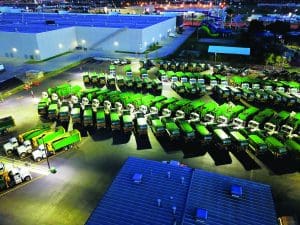
RNG Expansions
Through a mix of WM plants and third-party developers, WM has 16 plants across North America and plans to add an additional 17 RNG projects for its plants by 2026. Planned projects are in the works in Arkansas, California, Florida, Illinois, Oklahoma, Pennsylvania, Quebec, and Ontario. The plants in Oklahoma City, Oklahoma, and Springdale, Arkansas, are expected to come online later this year. WM estimates that the increased RNG production will displace 1.43 million tons (1.3 million tonnes) of carbon dioxide (CO₂) by 2026, the equivalent to 3 billion miles (4.83 billion km) driven by an average gasoline-powered passenger vehicle.
Other Sustainability Efforts
Constructing environmentally conscious landfills is one thing, but what happens to the waste once it’s collected? The post-collection piece of the story is where you and I, and companies like WM, can do much better. WM estimates that upwards of 90% of the plastic that it collects gets put in a landfill. Granted, not all of it can be recycled, but still, there’s a lot of recyclable plastic that goes straight into the ground instead of being reused.
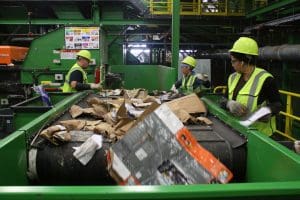
WM’s sustainability efforts include expanding its recycling program, integrating compressed natural gas (CNG) and RNG trucking fleets, and trying to create a business out of using waste. WM has also made an effort to improve its processes and implement best practices at its facilities to reduce environmental impacts and bring down costs as well. Aside from RNG, WM is supporting renewable energy efforts such as ultra-low-carbon intensity dairy projects. Like landfills, dairy farms are another key source of RNG production. Dairy farms can capture methane gas, turn it into RNG, and then use it to fuel WM’s fleet. WM is in the early stages of piloting zero-emissions electric trucks at multiple sites to facilitate commercialization of the technology. At its closed landfills, WM hosts 100 MW of wind power and 53.9 MW of solar capacity.
In November 2021, WM announced US$200 million in recycling investments in 2022 alone, which would bring its cumulative recycling budget between 2018 and 2022 to US$700 million. Over the past two years, the company has opened new materials recovery facilities (MRFs) in Chicago; Salt Lake City; Raleigh, North Carolina; and Sun Valley, California. By 2023, WM plans to outfit 95% of its residential recycling facilities with updated recycling technology.
“As consumer-packaged goods companies continue to set aggressive 2025 and 2030 goals for recycled content — in many cases approaching 50% — solutions need to scale, especially related to plastics, as plastic capture must grow five times to meet these targets,” said Hemmer. “We are making great progress unlocking this supply, increasing overall recycled plastic volume by 25% since 2019 and this will continue to expand. These enhancements will ensure recyclables are efficiently sorted and sold to high-quality end markets, meeting the strong demand for recycled content material in new products.”
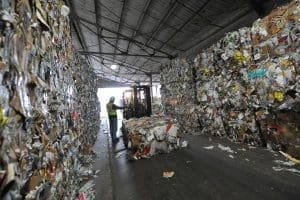
WM also expects to upgrade much of its remaining recycling facility network. MRFs in Houston; Cleveland; Woodinville, Washington; and Elkridge, Maryland, are being fully renovated, and 29 existing MRFs have already been or are currently being outfitted with enhanced technology as well as supplemental capacity.
RNG Takes Center Stage
WM, which is the largest recycling company in North America, is now spending more on RNG capital expenditures than it is on recycling capital expenditures. The commitment illustrates just one of many examples that showcase accelerated investment in RNG. WM’s recycling division has long been its least profitable segment. The company makes very little from recycling but does it because it’s good for the environment and its customers demand it. In this vein, RNG may prove to be a better long-term investment than recycling, both in terms of economic and environmental impact.



